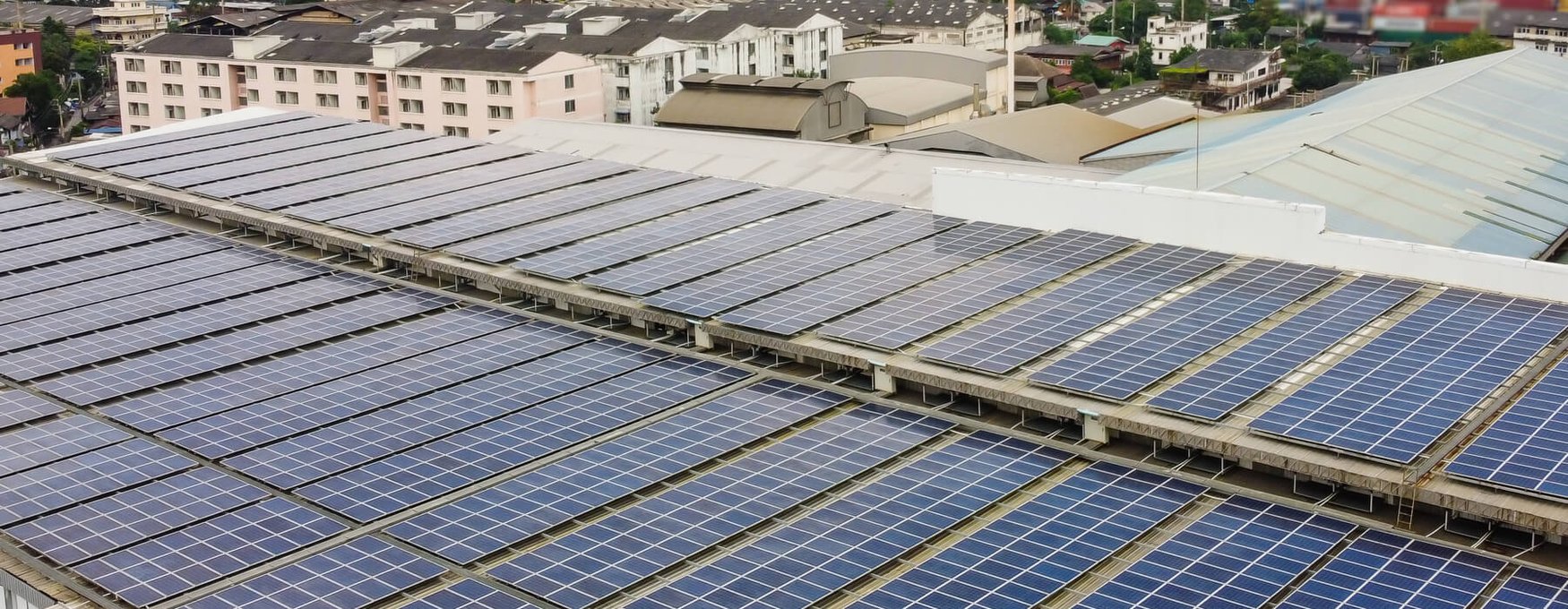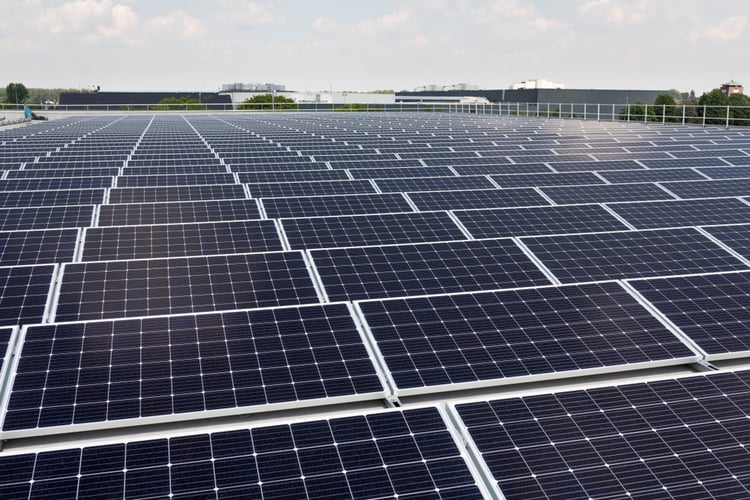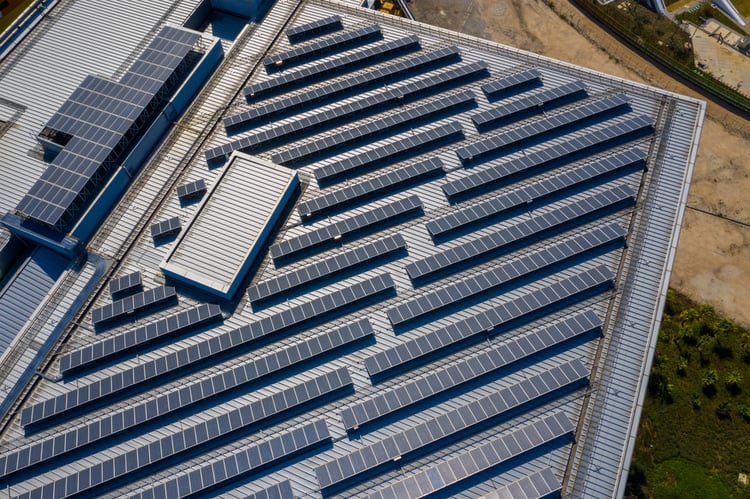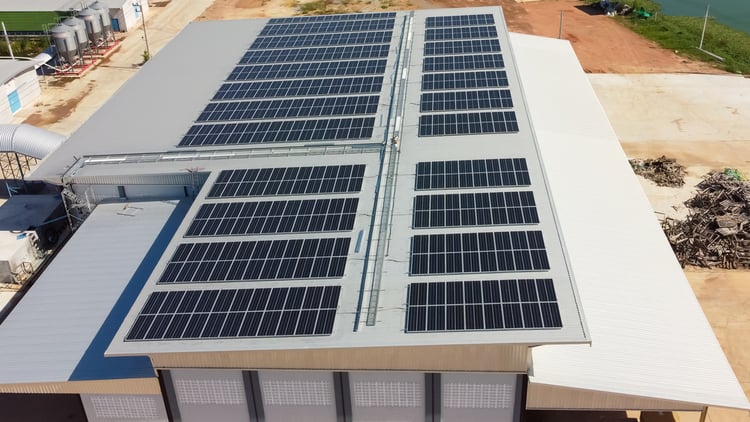Which Commercial Roofs Are Suitable for Solar Panels? 5 Design Tips

According to the Energy Information Administration, the US will add 21.5 gigawatts of solar power in 2022, representing 46% of the new capacity forecast. Solar power is now the fastest growing electricity source in the country, and the modular design of photovoltaic panels makes them viable at all project scales.
Commercial buildings with large roofs can take advantage of their space, installing solar panels to cut their power bills and emissions. These solar installations also benefit from economies of scale: according to data gathered by the Solar Energy Industries Association, a home solar system has an average price of $3.06/watt in the US, but this decreases to $1.45/watt in commercial systems.
Get a professional electrical design for your commercial solar PV system.
The first step before installing a commercial solar array is making sure you have an adequate roof. In the case of new commercial buildings, owners have the advantage of being able to design a solar-ready roof from the start. Here are five recommendations to optimize your commercial roof design for solar panels.
1) Flat Commercial Roofs Are Ideal for Solar Power

A flat roof simplifies the installation of solar panels on a new commercial building. Since solar installers will not be working on a sloped surface, the process becomes safer and easier. You can also use a ballasted mounting system, which holds solar panels in place with concrete bases. In other words, you will not be drilling holes on your new roof, which is necessary when solar panels are installed on sloped surfaces. Once your commercial solar array is operating, a flat roof also makes maintenance simpler.
2) The Roof Structural Design Should Consider the Solar PV Array
A 72-cell commercial solar panel can weigh over 60 lb, and large commercial arrays can have hundreds of them. According to the National Renewable Energy Laboratory (NREL), a PV system increases the load on a roof by up to 6 lb per sq.ft., when you consider racking systems and other components.
To design the roof properly, the structural engineer in charge of your project must know the load distribution of your solar array. Keep in mind that ballasted mounted systems are heavier, since they use concrete weights to hold solar panels in place.
3) Optimize the Orientation of Solar Panels and Avoid Shading

Since the sun’s position in the sky is always changing, the angle from which solar panels receive sunlight also varies. Ideally, solar panels should have an orientation and tilt angle that will maximize the amount of sunlight received during the year. On a flat commercial roof, this can be easily accomplished with a ballasted system with the optimal tilt angle. There are also tracking systems that keep solar panels pointed towards the sun, but these are better suited for ground installations.
Solar panels become more productive when they have optimal placement, but only if the area is not covered by shadows. Compared with homes, commercial buildings are less likely to be shaded by trees or other buildings. However, keep in mind that shadows move during the day, and a roof area that is clear during the morning may be completely shaded in the afternoon. Solar designers use special software that simulates the sun’s movement during the entire year, to determine the optimal layout for a PV system.
4) Make Sure Your Commercial PV System Is Properly Sized

Your roof design can be optimized if the size and layout of your solar array is known in advance. However, an undersized system will achieve minimal savings with respect to your power bills, while an oversized system brings unnecessary costs. To find the ideal size of a commercial solar array, there are two important factors to consider:
- The energy consumption profile of your building.
- Local net metering regulations: How are you paid for surplus power?
Solar panels reach their peak productivity around noon, and a large array will probably exceed your building consumption at that time. Surplus production is not a problem if your electricity provider offers net metering, but keep in mind this benefit is not available in some place.
If net metering is not available, your solar array should be sized according to your consumption, avoiding surplus production as much as possible. With net metering you can use a larger array, since surplus production is also subtracted from your consumption.
Just keep in mind that net metering conditions vary depending on the electricity provider, and there is normally a maximum credit you can get. There are cases where you can reduce your power bill to zero with net metering, and unused credit is often rolled over to the next month. However, net metering programs that pay you in cash for credits are extremely rare. This means you cannot increase the size of a commercial solar array indefinitely with the intention of billing your power company.
5) Consider Zoning Regulations, Building Codes and Local Laws
Last but not least, you must consider all local requirements for commercial solar power before starting your project. For example, your city may have historic districts where solar panels are not allowed. The opposite can also happen: In New York City, Local Laws 92 & 94 of 2019 require sustainable roofing systems in new constructions, renovations and roof replacements. You can meet this law with either solar panels or green roofs, but the ROI offered by solar power is better.

Michael Tobias
Michael Tobias, the Founding Principal of NY Engineers, currently leads a team of 50+ MEP/FP engineers and has led over 1,000 projects in the US
Join 15,000+ Fellow Architects and Contractors
Get expert engineering tips straight to your inbox. Subscribe to the NY Engineers Blog below.



